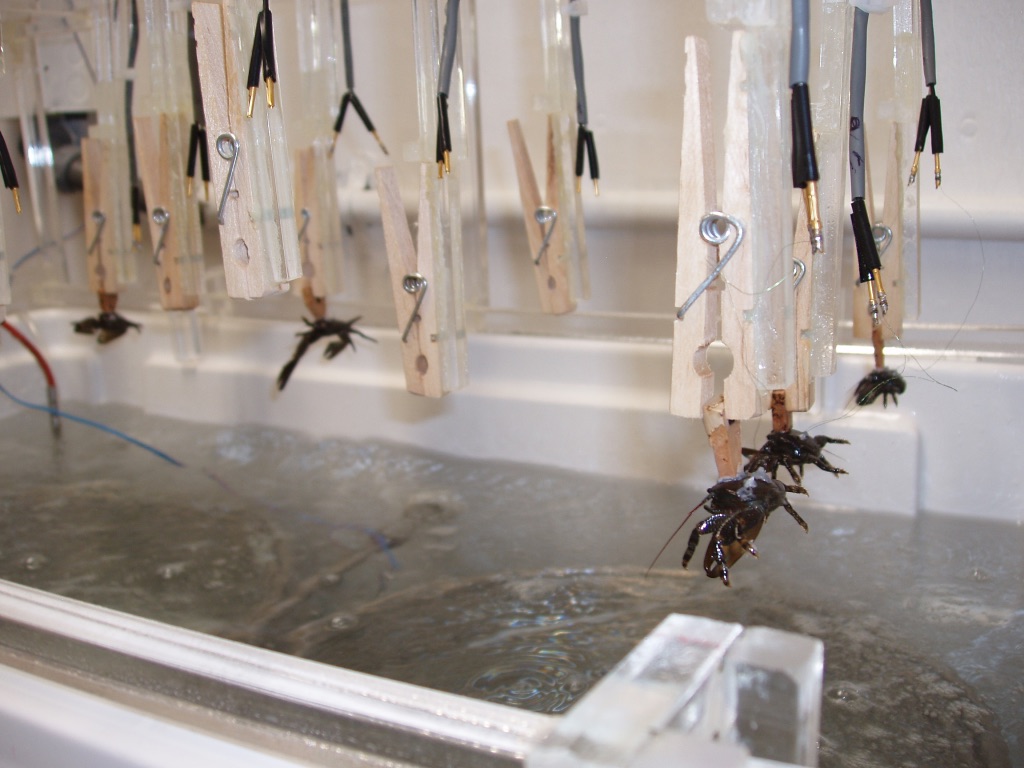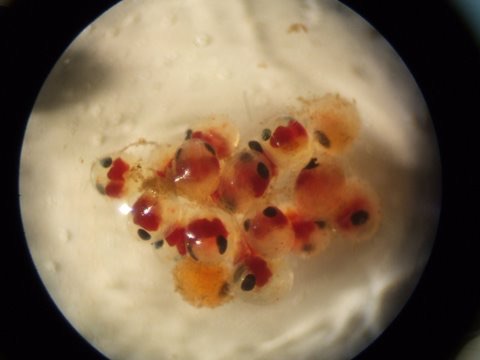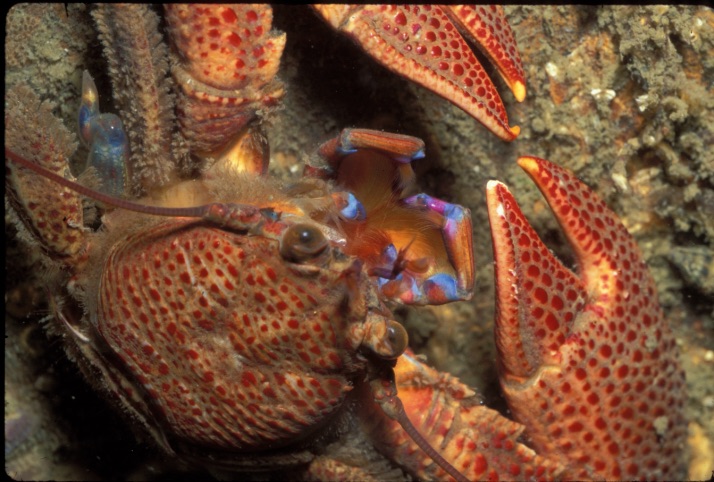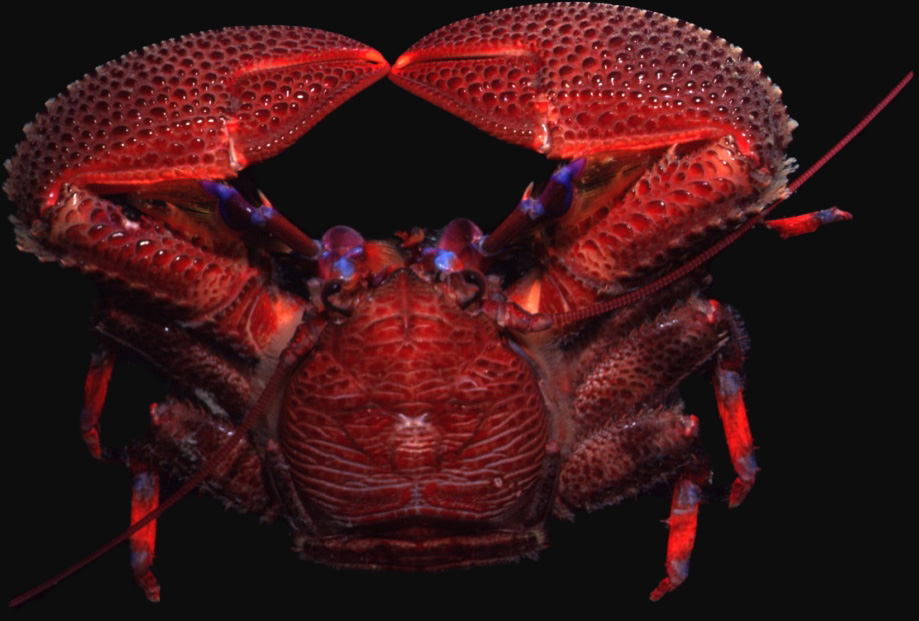Heat Waves
What are the effects of heat waves on marine organisms and ecosystems?

The world is getting warmer. Along with warmer average temperatures, the frequency, duration, and severity of extremely hot weather, or heat waves, is increasing (Stillman 2019, (Williams et al 2016). Intertidal organisms feel the effect of increased water temperature during marinie heat waves, as well as the effects of terrestrial heat waves during low tides. We study the effects of heat waves on intertidal zone animals in laboratory experiments that mimic extreme intertidal zone thermal conditions, and in field-sampling across seasons and latitude. This research allows us to make inferences about the relationships between the severity of heat waves and the level of thermal tolerance (i.e., the thermal safety margin), and between thermal tolerance thresholds and thermal tolerance plasticity. Our results suggest that the most heat tolerant species have the smallest thermal safety margins and the least capacity to adjust their heat tolerance through physiological plasticity, makiing them the most susceptible to the heat waves of the future with further climate warming (Gunderson & Stillman 2015, Stillman 2003).
Thermal Adaptation
How have organisms evolved to be more heat tolerant?

In our comparative studies of thermal tolerance limits of porcelain crabs from across a wide range of thermal habitats, it has become clear that these crabs adapted their thermal physiology to match the heat waves they experience during low tide (Stillman and Somero 2000, Stillman 2002, 2003, 2004). To understand the adaptive mechanisms that organisms have used in response to life in thermal extreme habitats, we have used functional genomics to examine changes in gene expression during thermal acclimatization (Stillman and Tagmount 2009), acclimation (Ronges et al.) and response to thermal stress (e.g., Stillman, Teranishi and Stillman 2007 , Garland et al 2015). These studies have been helpful to identify regions of the genome that are likely candidates for adaptive selection, and provide hypotheses for mechanisms associated with enhancing thermal tolerance.
Evidence suggests that organisms can shift their thermal adaptation across life-stages (Uno and Stillman 2020 , Miller et al 2013,) or across generations (Tanner et al 2020) to match habitat temperature variation. We have also been engaged in studies of thermal tolerance of molluscs, including populations of sea hares (Tanner et al 2020), nudibranchs (Armstrong et al 2019), snails (Rais et al 2010) and limpets from across locations with varying thermal habitat conditions (Wang et al 2019), which show that there can be significant levels of physiological variation in thermal tolerance among pupulations. Previous work in coral reefs of Ofu, American Samoa have also found evidence for thermal adaptation of corals to extreme thermal habitats (Barshis et al 2010,2018)
Ocean Acidification
How does reduced pH impact coastal crabs?

Termed global warming's "evil twin," the reduction in average pH and the increased variability of pH is a direct consequence of increased atmospheric CO2 being absorbed by the oceans, enhanced upwelling due to warmer land temperatures, and the higher rates of photosynthesis and respiration in warmer, more nutrient rich, coastal waters. The Stillman Lab has investigated the impacts of ocean acidification in phytoplankton and in coastal crabs. In collaboration with Ed Carpenter and Tomoko Komada we studied how calcifying marine phytoplankton called cocolithophores, important in global carbon cycling and transport of atmospheric carbon dioxide to the deep sea, change their cellular physiology following hundreds of generations in acidified ocean conditions (Lefebvre et al, Benner et al, Diner et al). In a series of studies on porcelain crabs, we showed that there are metabolic consequences to early life-stages (embryos, larvae) under reduced pH, but the effects vary across broods (Carter et al, Ceballos-Osuna et al). Our studies of adult crabs have shown that environmental adaptation to intertidal zone habitats influences responses to reduced pH (Page et al 2016)
Multiple Stressors
How to organisms respond to changes in multifarious real-world habitats?

In the real world, lots of environmental factors change at once (Todgham and Stillman 2013 , Gunderson et al 2016). Temperature, pH, salinity and dissolved oxygen may all simultaneously shift their mean levels and their variability. Conducting experiments that test how organisms respond to changes in multiple environmental factors has become a speciality of the Stillman Lab. In our studies of coastal invertebrates, we have investigated concomitant shifts in pH and temperature (Fay et al 2019, Armstrong et al 2017 & 2019, Paganini et al 2014), salinity and temperature (Chen and Stillman 2012 , Tanner et al 2019, Miller et al 2014, Miller & Stillman 2013), and temperature and oxygen (Bjelde et al 2015). In our studies of phytoplankton, we have investigated the effects of nitrogen source and pH (Lefebvre et al 2011)
Genomics Approaches
The Stillman Laboratory is a leader in crustacean functional genomics

Genome-scale approaches have revolutionaized mechanistic studies of organismal physiology, including responses to environmental change (Stillman & Armstrong 2015). The Stillman Laboratory generated the first complete genome sequences for porcelain crabs (Angst et al 2024) and is a leader in applying functional genomics tools to study physiological responses of porcelain crabs and red king crabs to thermal stress, pH, and other environmental factors (Stillman et al 2006 , Teranishi & Stillman 2007, Stillman & Tagmount 2009, Tagmount et al 2010, Ronges et al 2012, Armstrong & Stillman 2016, Fay et al 2019), and we have also conducted functional genomic analyses in coccolithophore calcifying phytoplankton (Benner et al 2013) and corals (DeSalvo et al 2008). We are also presently involved in genomic and functional genomics studies of the alpine willow leaf beetle in collaboration with Caroline Williams, Nathan Rank and Elizabeth Dahlhoff (see publications page).
The Stillman Lab has also played a major role in building community around application of functional genomics tools in crustaceans including through sympoisa at meetings of the Society for Integrative and Comparative Biology (Stillman et al 2008, Stillman et al 2011 , Mykles et al 2016a,b, Burnett et al 2020a,b).
 RESEARCH IN THE STILLMAN LAB
RESEARCH IN THE STILLMAN LAB